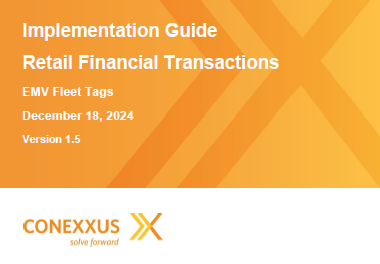
Magnetic stripe fleet card processing has historically used track data to convey required product restrictions and prompts to the POS. The POS then used the product restriction information to ensure only applicable products were purchased and prompt responses were transmitted from the POS to the acquirer/host in fields as defined by the acquirer. Encryption, tokenization, and masking of account numbers and track data made product restriction and prompt data impossible to interpret, creating artificial barriers to securely process fleet.
Ultimately, processing of fleet EMV chip cards face similar barriers. The EMV Fleet Processing Specification defines Tag DF 32 for Purchase Restrictions and extends previous work, completed by IFSF, to enhance, Tag DF30, for Fuel Card Usage Bitmap for Prompting. A key direction for this Specification is to develop a tag-based solution to ease the development for merchants and POS vendors and not to focus on the use of Tag 57 – Track 2 Equivalent Data. This Specification does not eliminate the use of the Track 2 Equivalent approach, but instead provides an alternative path for handling fleet data and provide for future growth of data collected using this approach.
A standard way to read fleet prompt requirements and transmit the data in an EMV transaction will limit the number of interfaces required for various fleet cards. This can significantly reduce the work required by vendors and acquirers/hosts, thereby eliminating complexities and potentially reducing overall cost of implementation.
